NASA SLS lunar launch vehicle completed, Webb telescope awaiting launch
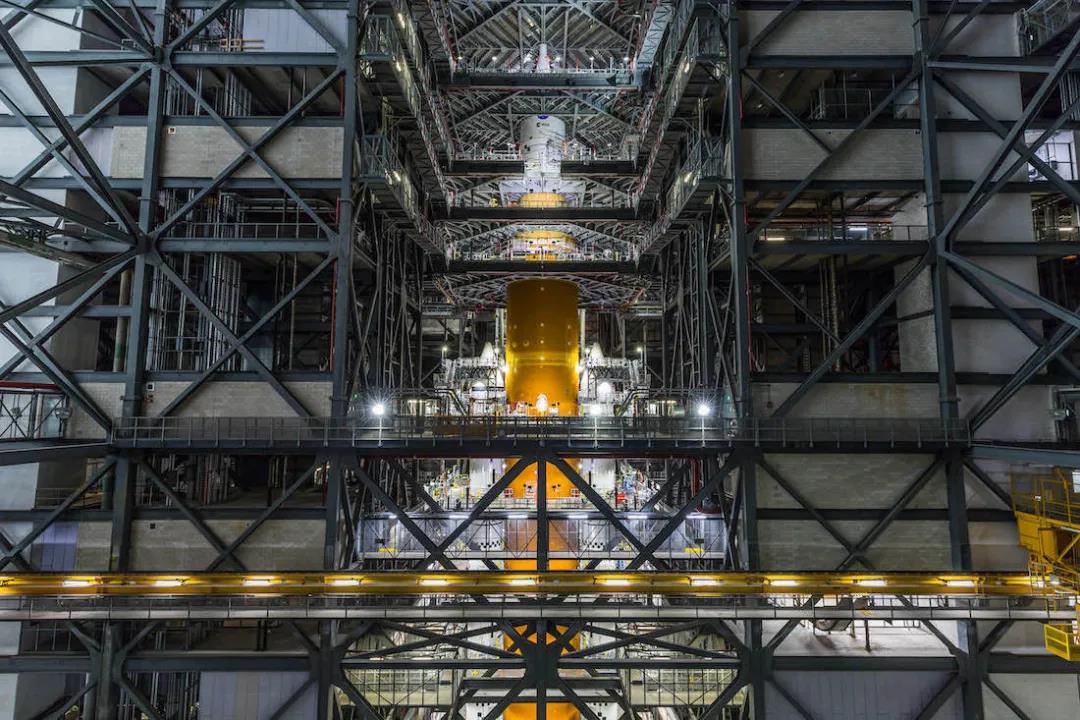
NASA's Space Launch System SLS rocket is located in the Kennedy Space Center Spacecraft Assembly Building
NASA's two flagship missions are finally approaching launch, with the US government investing decades and a total investment of over $50 billion. This week, NASA showcased two "great power heavy vehicles" to the news media at spaceports in Florida and French Guiana.
At NASA's Kennedy Space Center, reporters and photographers were granted access to the spacecraft assembly building on Friday to photograph the fully assembled space launch system SLS rocket. SLS is a 98 meter high launch vehicle designed to transport astronauts to the moon, marking the first time since the Apollo program in the 1960s and 1970s that the United States has proposed manned lunar landing.
The SLS space launch system carrying the Orion manned spacecraft is scheduled to be launched from the Florida Space Coast as early as February 12, 2022, for an unmanned lunar orbit test flight. This launch will be the first mission of NASA's Artemis program, which aims to send astronauts back to the surface of the moon by 2030.
The SLS test flight was a milestone in the 10-year plan that began in 2011, when the US Congress ordered NASA to use retired space shuttle technology to design and build a massive rocket. In 2006, NASA awarded Lockheed Martin a contract to develop the Orion spacecraft under the Constellation program, which was cancelled in 2010.
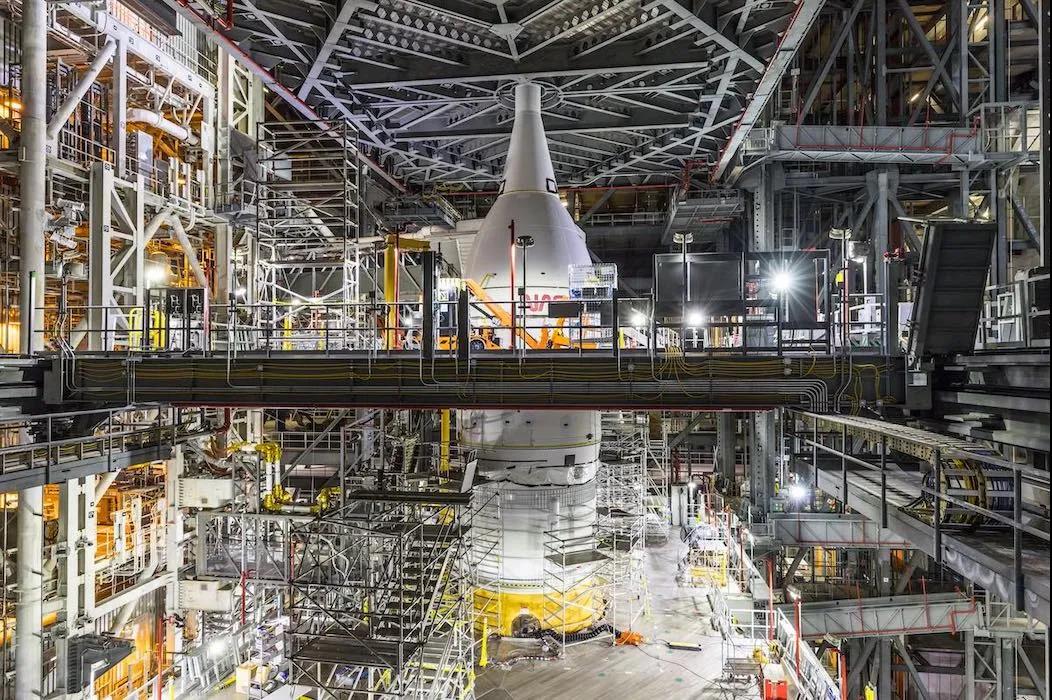
NASA's Orion spacecraft is assembled on the SLS space launch system
Through two major reorganizations of NASA's deep space exploration efforts, NASA was able to maintain the Orion program. The first was during the Obama administration, when Congress and the White House agreed to shift NASA's focus to manned Mars missions and manned exploration of asteroids.
The Trump administration has moved NASA's exploration program back to the moon. NASA calls it the Artemis Moon Project. Artemis is the twin sisters of Apollo in Greek mythology.
After all of this, the Orion project survived. Earlier this year, NASA's Inspector General reported that the agency has spent $12.8 billion on developing the Orion spacecraft since 2012, with an additional $6.3 billion spent on the Constellation program in the previous decade. NASA's total investment in Orion exceeds $19.1 billion.
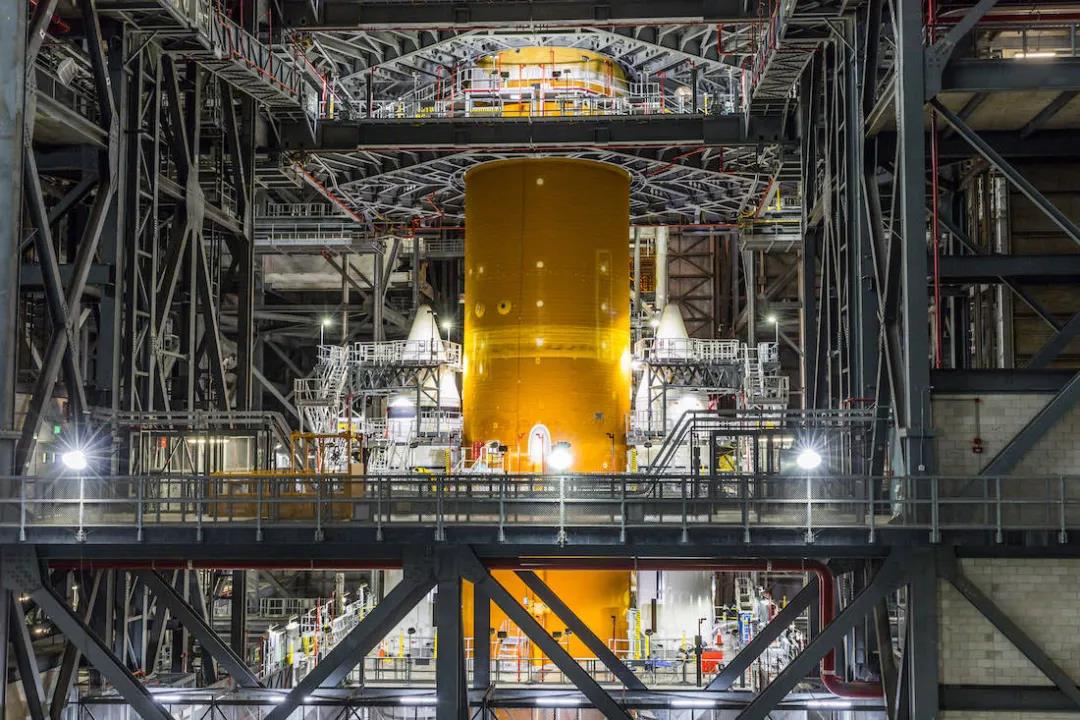
The Artemis 1 mission will be the second space flight of the Orion spacecraft and the first mission of the Orion spacecraft to the moon. This is the first flight of the Orion spacecraft carrying a European made service module, which provides power and propulsion for the spacecraft.
The NASA Inspector General announced in April that the agency has invested $18.8 billion in the SLS project budget since 2012. During the same period, there was also $4.8 billion allocated for upgrading the ground infrastructure of Kennedy Space Center in preparation for SLS and Orion missions. NASA's total investment in SLS exceeds $23.6 billion.
If the test flight of the Artemis 1 mission progresses smoothly, NASA hopes to launch the Artemis 2 mission before the end of 2023. This mission uses the second SLS rocket, which will carry three NASA astronauts and one Canadian astronaut back to Earth along the far side of the moon's orbit, reaching the farthest distance from the Earth's surface than anyone has ever been before.
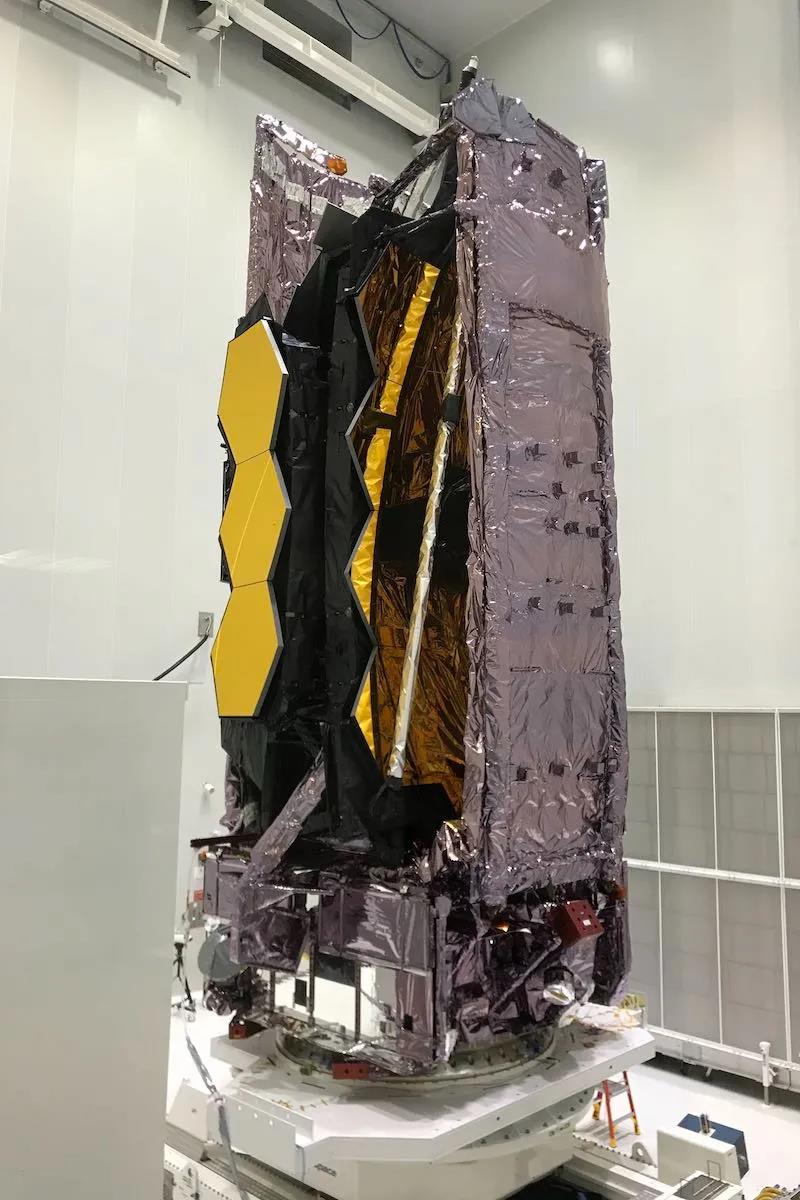
Preparing for the launch of the James Webb Space Telescope in a clean room in French Guiana
3900 kilometers southeast of the Kennedy Space Center, media representatives visited the Kourou Spaceport in French Guiana, where technicians were preparing for the launch of the James Webb Space Telescope on the Ariane 5 rocket.
After more than 20 years of effort, the James Webb Space Telescope has finally been completed. The space telescope is scheduled to enter space on December 18th aboard the Ariane 5 rocket and travel to the L2 point of the solar terrestrial system, which is nearly 1.5 million kilometers away from Earth.
Weber folded its antenna device to fit the payload inner diameter of the Ariane 5 rocket. The observatory is 10.5 meters high and will weigh 6200 kilograms when fully fueled.
The James Webb Space Telescope mission cost over $10 billion, including grants from NASA, the European Space Agency, and the Canadian Space Agency. NASA bears the majority of the costs, approximately $9.7 billion, including development expenses and five-year operational expenses. The European Space Agency provided Weber with instrument hardware and launch vehicles, while Canada built precision guidance sensors and spectrographs for the observatory.
After launch, the observatory will begin a series of deployments, deploying its solar cell array, high gain antenna, and lenses. The Weber telescope is also equipped with five sunshades to shield the lenses, detectors, and scientific instruments, keeping the temperature of the telescope below minus 223 degrees Celsius.
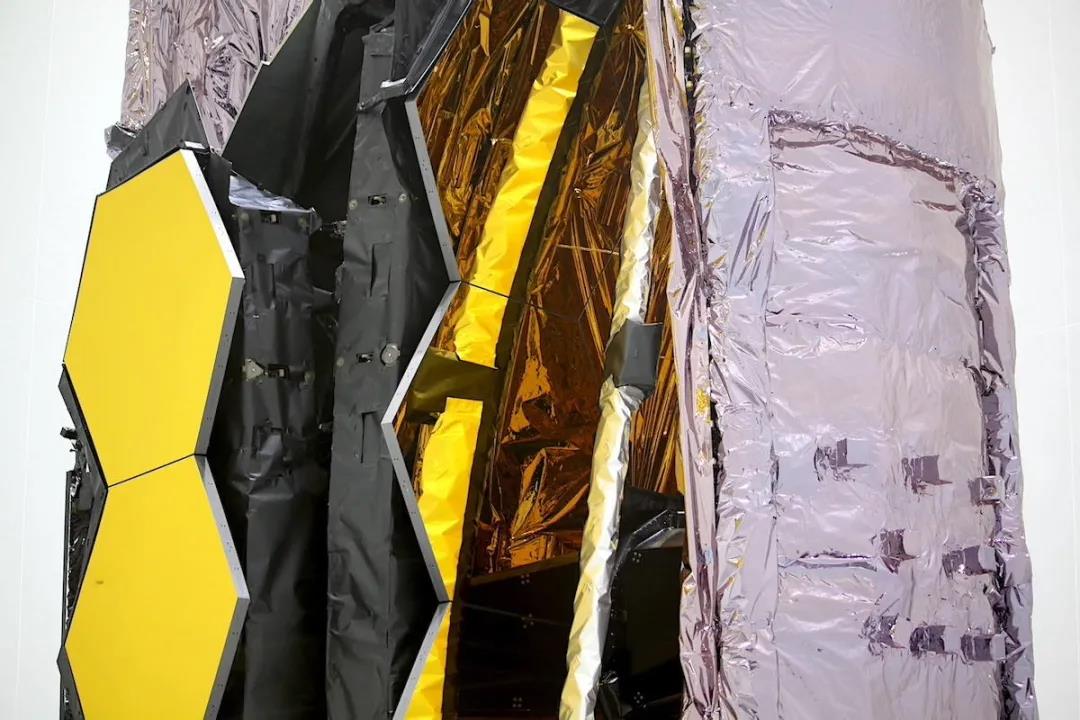
The sun visor is made of aluminum plated Kapton material, and each layer of sunscreen film is as thin as human hair. Once Weber enters space, this sunshade will expand to the size of a tennis court.
The observatory's infrared instruments will peek into the oldest and most distant regions of the universe, studying some of the earliest stars and galaxies formed after the Big Bang 13.5 billion years ago. Astronomers will also use the Weber telescope to observe the formation and evolution of galaxies, study the birth of stars, and learn more about the atmospheres of planets that may be suitable for the survival of life outside the solar system.
The Weber telescope will be the largest space telescope launched so far, with a main mirror composed of 18 gold-plated beryllium plates and a diameter of 6.5 meters. This is almost three times the width of the Hubble's giant main mirror.
Ten years ago, the Obama administration and Congress set three priorities for NASA's ten-year plan from 2010 to 2020: new commercial manned and cargo transport spacecraft to assist in accessing and utilizing the International Space Station, development of SLS rockets and Orion spacecraft, and completion of the construction of the Webb Telescope.
At that time, NASA's goal was to launch the first commercial manned spacecraft to the space station in 2017 (on May 30, 2020, SpaceX's Crew Dragon spacecraft launched astronauts to the space station, ending the nearly 9-year gap in US manned space capabilities since the last space shuttle launch in 2011). NASA stated that the first SLS/Orion test flight is scheduled for 2017, while Webb's launch is scheduled for 2018. Gugu Gu Gu
In 2014, NASA signed commercial manned contracts with SpaceX and Boeing, and spent approximately $5 billion in federal funds to cover the development costs of SpaceX's Crew Dragon spacecraft and Boeing's Starline spacecraft. Both projects are facing delays, but the commercial spacecraft contract is signed in the form of a fixed price agreement, which means the contractor is responsible for the cost overruns.
The contracts signed by NASA with Webb, SLS, and Orion are not like this.
NASA and Boeing are the contractors for the SLS core and upper stages, with the SLS upper stage costing billions of dollars and still in the early stages of development. The first three SLS flights will be launched using a temporary low-temperature upper stage derived from the second stage of the Joint Launch Alliance's Delta 4 Heavy rocket. The new upper stage of the SLS rocket will be powered by four Aerojet Rocketdyne RL10 engines instead of a single RL10 engine installed in the temporary cryogenic stage. However, according to a report released by NASA's internal oversight agency last year, the first SLS rocket with a new upper stage, known as the SLS Block 1B variant, will not be launched before 2026.
Source: International space enthusiasts